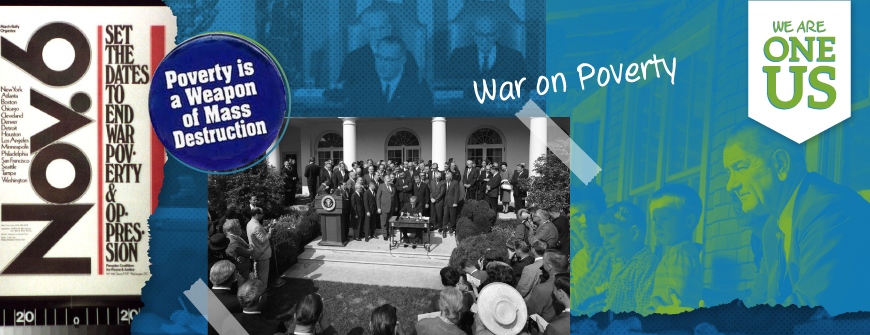
In 1964, poverty had escalated to unprecedented highs in the United States. Nineteen percent of all Americans were considered impoverished. Something needed to be done to pull the millions of struggling American families out of the insidious cycle of struggle, momentary relief and dependence.
During his State of the Union address at the beginning of 1964, President Lyndon B. Johnson announced an “unconditional war on poverty” and introduced the Economic Opportunity Act. This act was soon passed by Congress and created 40 government programs all to ease poverty and increase economic opportunities to low-income areas.
The overall sentiment of the war on poverty is mixed. Some programs established by the Economic Opportunity Act still resonate positively today, such as the vocational training organization Volunteers in Service to America (VISTA) and the low-income elementary education initiative Head Start. These programs proved to provide tangible improvements to communities, however their funding was diverted to the Vietnam War before these initiatives could gain traction.
Still, other precedents set by President Johnson had unintended consequences that exacerbated the issue. The war on poverty expanded many safety net programs, which while temporarily useful, are not permanent solutions to poverty and keep people in a cycle of dependency, handouts, and victimhood, which we call The Churn.
When President Johnson introduced his plan to enact war on poverty, he promised to “not only relieve the symptom of poverty, but to cure it, and above all, to prevent it.” Organizations like VISTA do address some of the root causes of poverty, but in general, this legislation acted as a band-aid on the nation’s poverty crisis. It treated the symptoms of hunger and homelessness, but did not dig down into the reasons people were struggling. It did not make Americans feel needed, which is a core essence of human dignity.
Solutions for Change believes the only way to permanently escape poverty is to solve the root causes that have kept someone stuck in The Churn and to make them feel valued and needed in their community. There are lessons to be learned from the war on poverty that we can use to create stronger, more comprehensive solutions. Here are a few ways we think the war on poverty fell short and how Solutions can remedy those shortcomings.
Government programs aren’t enough to turn the tide of poverty in communities. Government programs are designed to treat people like liabilities to manage rather than human assets to develop.
Money, food, and shelter alone don’t keep people out of poverty. You can provide someone with all three, but resources run out eventually. Without the personal capacity to sustain themselves, people will use what you give them and then have no choice but to return to struggling.
Programs that ease the symptoms of poverty are not meaningful investments. Temporary relief is nothing compared to education, therapy and a community that transforms an individual into a self-sufficient member of society.
At Solutions for Change, we know it takes the entire community to lift someone out of poverty. Comprehensive, grassroots solutions are the key to permanently solving rampant issues like homelessness, generational poverty and addiction. This requires a ground-up, community-based, market-driven approach that can never be accomplished through a government program.
In The Churn, people fall on tough times. They experience short-lived relief from handouts and then support runs out—leaving them in the same difficult situation. Handouts are the only moment of reprieve in The Churn. So even though those in The Churn know the relief is temporary, it’s better than nothing. And that comfort is easy to get dependent on.
Handouts make it difficult to gain forward momentum up and out of The Churn. Dependence drags people down, and Solutions for Change works to lift them into independence. Giving people the education, resources and opportunities to make themselves financially independent is the real way to solve poverty. It takes hard work and dedication on all fronts, but it’s exactly how Solutions has successfully transformed lives for years.
Solutions for Change believes in fighting The Churn no matter what, and learning from past attempts to combat The Churn gives us insight into how we can better support people in the future. Because of the lessons learned from the shortcomings of the war on poverty, we don’t invest in temporary solutions. We invest in deeper education and rehabilitation to solve the root causes of someone’s struggles—ensuring they can build a good future for themselves. Solutions for Change is here to work hard for our students, and push them to work for a better life in return. To learn more about our specific programs and initiatives, check out the impact of Solutions Academy.

